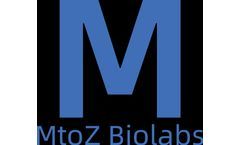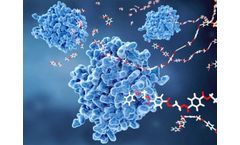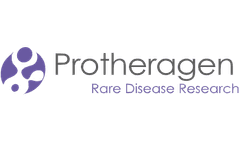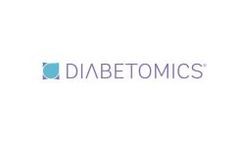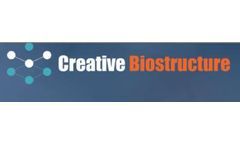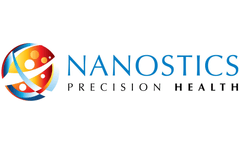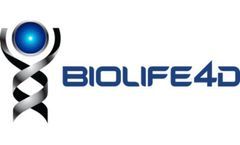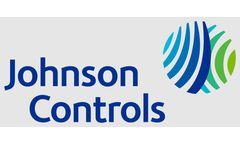Disease Early Articles & Analysis
21 articles found
Acetylation is a common post-translational modification of proteins, typically occurring on lysine residues of proteins, and plays a crucial role in regulating protein function, cell signaling, gene expression, and disease onset. For instance, the acetylation state of histones directly influences chromatin structure and the regulation of gene expression.Acetylation detection ...
Beyond the kitchen, enzymes play a pivotal role in healthcare, enabling early disease detection and personalized treatments. Diagnostic enzymes empower healthcare professionals to pinpoint ailments accurately, while therapeutic enzymes serve as the architects of novel drugs, revolutionizing medical treatments. ...
By analyzing the changes of lipid biomarkers throughout the disease process and their interactions with other biomolecules, we can grasp the position of lipid metabolism disorders in the development of diseases as a whole and identify the possible pathogenesis. Identification of lipid indicators for disease diagnosis Lipidomics is used to ...
However, recent advancements in diagnostics technology hold promise for speeding up the field of rare disease therapies. Rare disease diagnosis can often be a complex and time-consuming process. ...
Abstract Background: Rheumatoid arthritis (RA) is a systemic autoimmune disease characterized by chronic inflammation of synovial joints. Anticitrullinated protein autoantibodies are detected by the CCP test in early disease and predict the development of erosive disease as well as extraarticular manifestations. ...
How is nano-flow cytometry being used to improve early disease detection? Cancer detection: Nano-flow cytometry is being used by researchers to create new blood tests that can identify cancer cells in their earliest stages. ...
Precision-engineered enzymes enable the design of ultra-sensitive diagnostic assays that detect trace amounts of disease markers, revolutionizing early disease detection. Moreover, they serve as the guiding hand behind targeted drug delivery, augmenting treatment efficacy while minimizing collateral damage to healthy tissues. ...
Enzymes for disease diagnosis can be divided into two categories: those that are produced by the body in response to disease and those that are specific to the disease itself. ...
These tests are highly sensitive and can detect even small amounts of enzymes, which can be indicative of a disease or condition. For example, elevated levels of the enzyme creatine kinase can indicate muscle damage, while increased levels of the enzyme alanine aminotransferase (ALT) can be indicative of liver disease. ...
People living with frontotemporal dementia, or FTD, are commonly misdiagnosed with psychiatric disorders or Alzheimer’s disease and other causes of dementia, such as Parkinson’s disease and vascular dementia. While frontotemporal dementia and Alzheimer’s disease can both cause dementia, there are distinct differences in ...
Nanostics’ ClarityDX Bladder test uses extracellular vesicle detection technology and machine-learning model analysis to identify the most potent disease predictors for the early detection of bladder cancer. “Strategic investments in digital health are enabling Alberta to become more globally competitive towards increasing health and economic ...
Many neurological diseases, including Alzheimer’s disease, can be thought of as continuums, whether the presence and manifestation of the disease are different depending on the stage of the disease. In this article, we provide a high-level overview of the stages in the Alzheimer's disease continuum, with a focus on preclinical Alzheimer’s disease and its importance in patient care and ...
Even if heart health isn’t your top concern in the new year, you can’t go wrong staying on top of your cardiovascular wellbeing. Sadly, heart disease is the leading cause of death in the United States, according to the Centers for Disease Control (CDC). And a recent study found that 40% of adults between the ages of 50 and 64 without a ...
Bynum: As with most conditions, early detection of AMD is preferred because, when we can detect disease early, we have an opportunity to make adjustments in the hopes of changing course. ...
Pediatric Short Bowel Syndrome (also called SBS or Short Gut Syndrome) generally develops shortly after birth due to an underlying gastrointestinal (GI) condition. The condition then can lead to intestinal surgery, in which part of the short bowel is removed. SBS is a devastating condition where patients struggle to absorb life-sustaining nutrients from their diet due to the surgical removal of ...
This is evident in the countless women who are still misdiagnosed – either receiving a false positive or getting diagnosed in the later stages of the disease. Why Early Detection is Important According to the National Breast Cancer Foundation, if breast cancer is still detected in its early stages (when it is localized and has not spread ...
Revolutionizing breast cancer detection Breast cancer is the most diagnosed cancer in women in the United States and the second leading cause of cancer death in American women.1 It is also treatable if detected early enough. While there are various cancer detection modalities available, current breast imaging devices fail to expose as much as 35% of breast cancers and that ...
DeepMind’s idea of leveraging AI to help identify AKI early is spot-on. They have been able to train on a large data set and have overcome many of the hurdles needed to deliver something practical. ...
These results highlight a neddylation-dependent mechanism regulating gene expression in the liver that is disrupted in early metabolic liver disease and may contribute to the progression to NASH, cirrhosis, and ultimately hepatocellular carcinoma. ...
In the long run, a lack of quality sleep has been associated with obesity, diabetes, cardiovascular disease, and even early mortality. The most common sleep disorders are insomnia, sleep apnea, snoring, restlessness, sleepwalking and narcolepsy. ...

